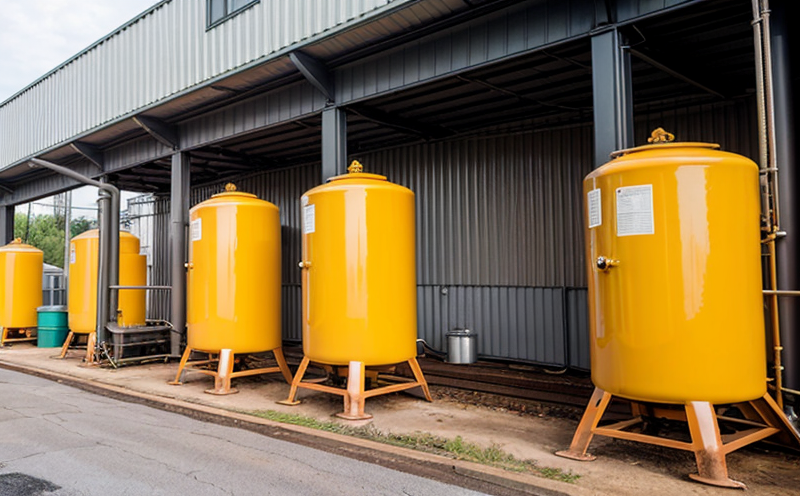ISO 8573 Compressed Air Quality Standards Testing Validation Method Development Test
The ISO 8573 series of standards is a set of internationally recognized specifications that define the quality levels and limits for various contaminants in compressed air. The ISO 8573-1:2010, which focuses on particle contamination, sets forth specific requirements for particle levels in different grades (e.g., Grade 1, Grade 2). This is crucial for industries that rely heavily on clean and reliable compressed air, such as pharmaceuticals, electronics manufacturing, food processing, and automotive assembly.
The ISO 8573 series also covers other contaminants including water vapor, oil mist, and hydrocarbon contamination. These standards are essential to ensure the quality of compressed air is suitable for critical applications where even trace amounts of contaminants could compromise product integrity or operational efficiency.
Validation Method Development in this context refers to the process of ensuring that the testing methods used meet the specified ISO 8573 guidelines. This involves a comprehensive approach from initial sample collection, through rigorous analytical procedures, and finally reporting results that adhere strictly to the standards' stipulations.
The first step in validating these methods is the specimen preparation. Depending on the type of contaminant being tested for (particles, water, oil, etc.), appropriate sampling techniques must be employed. For particles, this often involves using a suitable filter and capturing a representative sample volume to ensure accurate measurement.
The next phase entails selecting the right instrumentation. Various analytical tools are used depending on what aspect of compressed air quality is being evaluated:
- Particle Analysis: Laser particle counters, optical particle counters (OPC), and gravimetric analysis.
- Water Vapor Content: Dew point meters or psychrometers.
- Oil Mist Detection: Gas chromatography mass spectrometry (GC-MS) for trace oil detection.
- Hydrocarbon Contamination: Fourier transform infrared spectroscopy (FTIR).
Once the sample is collected and prepared, it undergoes analysis according to ISO 8573 procedures. The results are then compared against the specified quality levels outlined in the relevant standard. Reporting must be precise and detailed, providing a clear picture of compliance or non-compliance with the set standards.
This testing process is critical for maintaining high-quality compressed air systems which can significantly impact operational efficiency and product quality across various sectors. By adhering strictly to ISO 8573 guidelines, industries ensure that their processes are not only efficient but also environmentally responsible by minimizing waste and maximizing resource utilization.
Benefits
The benefits of ISO 8573 compressed air quality standards testing validation method development extend across multiple dimensions:
- Enhanced Product Quality: Ensuring that the compressed air used in manufacturing processes meets stringent purity levels directly contributes to higher product quality and reliability.
- Safety Assurance: By eliminating harmful contaminants, especially in industries like healthcare and pharmaceuticals, this testing ensures safer working environments for employees and consumers.
- Economic Efficiency: Reduced downtime due to contaminated air can lead to significant cost savings for businesses. Moreover, it helps in optimizing energy usage through more efficient equipment operation.
- Regulatory Compliance: Adhering to international standards like ISO 8573 helps companies meet regulatory requirements and avoid potential fines or sanctions.
The testing process also fosters innovation within R&D departments by providing detailed insights into how different contaminants affect various processes. This knowledge can be leveraged for developing new products or improving existing ones, thereby gaining a competitive edge in the market.
In summary, implementing ISO 8573 compressed air quality standards not only enhances operational efficiency but also promotes sustainable practices that benefit both the environment and business performance.
Why Choose This Test
Selecting ISO 8573 testing for compressed air quality is a strategic decision that offers numerous advantages:
- Global Standardization: Using internationally recognized standards ensures consistency and comparability across different regions, facilitating smoother international business operations.
- Advanced Analytical Techniques: Our lab utilizes cutting-edge technology to ensure accurate and reliable results. This precision is vital for maintaining high-quality air in complex industrial settings.
- Comprehensive Coverage: We test all aspects of compressed air quality specified by ISO 8573, ensuring no detail is overlooked. This comprehensive approach guarantees thorough evaluation and validation.
- Expertise & Experience: Our team comprises seasoned professionals with extensive experience in industrial testing and compliance. Leveraging this expertise ensures that your tests are conducted to the highest standards.
- Customized Solutions: We offer tailored solutions based on specific industry needs, ensuring that our services align perfectly with your unique requirements.
- Cost-Effective: While maintaining the highest level of quality and accuracy, we strive to provide competitive pricing. Our efficiency in conducting these tests helps keep costs down without compromising on performance.
Choosing this service means investing in superior quality assurance practices that can lead to long-term benefits for your organization. Whether you're looking to meet regulatory requirements or improve operational efficiencies, our ISO 8573 testing services provide the necessary tools and expertise to achieve these goals effectively.
Environmental and Sustainability Contributions
The implementation of ISO 8573 compressed air quality standards not only enhances product quality and safety but also makes significant contributions towards environmental sustainability:
- Reduced Energy Consumption: Cleaner compressed air can reduce the load on equipment, leading to lower energy consumption. This efficiency translates into reduced carbon footprint.
- Minimized Waste: By ensuring that only necessary contaminants are present in the compressed air supply, there is less waste generated during manufacturing processes. This reduces landfill contributions and helps conserve natural resources.
- Better Resource Utilization: Optimizing the quality of compressed air can lead to better utilization of raw materials. For instance, in food processing, cleaner air ensures that products are not contaminated, reducing the need for reprocessing or scrapping.
In addition to these direct benefits, adhering to ISO 8573 standards fosters a culture of environmental responsibility within organizations. It encourages continuous improvement and adoption of greener practices throughout all levels of business operations.
By integrating ISO 8573 testing into your quality management system, you demonstrate commitment not just to product excellence but also to sustainable development goals. This approach aligns with global initiatives aimed at promoting cleaner production methods and reducing adverse environmental impacts.





